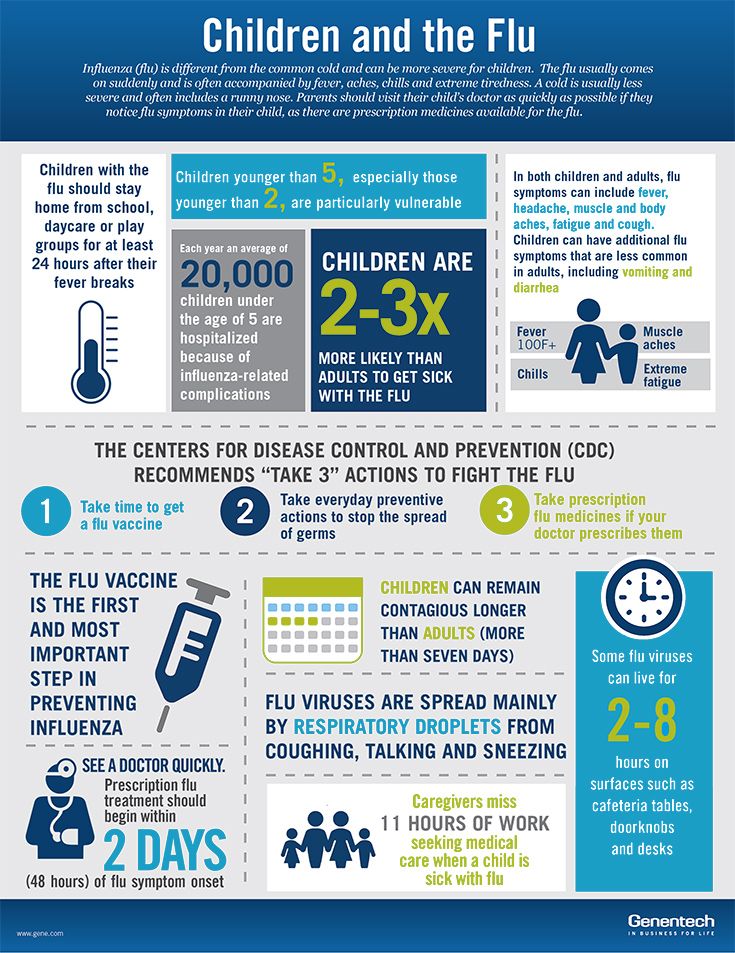How to discipline a child without corporal punishment
Alternatives to Spanking - NIU
Before delving into this heavy topic I want to say, parenting is hard. Period. It can be a difficult, exhausting and an unappreciative job! It is normal to feel frustrated, angry, upset and sometimes alone as we work through tough parenting decisions. Know that the teachers here do understand all of those parenting related feelings. That’s why I am writing about and presenting this information, to give you alternatives and acknowledge what you do as parents, on a daily basis, isn’t always easy.
In this article I will define and clarify what spanking is; address five reasons not to use spanking; I will share alternatives to spanking, and lastly share tips and pointers to help you during those stressful times.
What is spanking? It is a form of corporal punishment. It includes whoopin’, slapping, grabbing, popping, smacking… handling your child roughly in any way is a form of corporal punishment. FYI - If you hit your child with any object (belt, brush, fly swatter, wooden spoon) it falls under the U. S. definition of abuse. Corporal punishment is the use of physical force with the intention to cause a child to experience pain, but not injury, for the purpose of correction or the control of the child’s behavior. Which leads me to an interesting fact; in the U.S. we are not allowed to perform corporal punishment on any inmate in our correctional system. It is illegal to do so. But, corporal punishment against a child is overlooked time after time. It is socially sanctioned.
So, why should you not spank your child? Here are five points I pulled from a recent seminar I attended at a CAEYC conference presented by Michele Knox Ph.D., Associate Professor of Psychiatry at the University of Toledo, College of Medicine, and Margarita Hernandez, Program Coordinator for Pillars‐Safe From the Start called “I was spanked and I turned out okay.”
- Spanking has limited control. Two out of the five studies that were presented showed decreased compliance. The studies actually supported the fact that children who were guided by parents and caregivers who used firm verbal directives and discipline had a higher level of compliance.
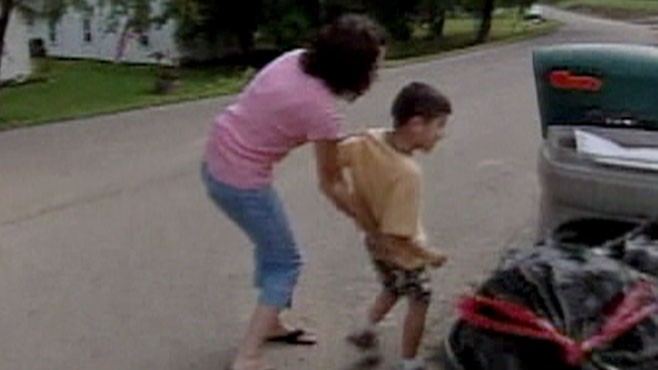 Children who are spanked were found to have a lower moral internalization. That means when parents are away those children are far less likely to make good choices and do what they are supposed to do. Also, most cases of abuse began with socially sanctioned discipline. It’s difficult to show our children how to maintain control over their choices when we are using a form of discipline that leads adults to lose complete control.
Children who are spanked were found to have a lower moral internalization. That means when parents are away those children are far less likely to make good choices and do what they are supposed to do. Also, most cases of abuse began with socially sanctioned discipline. It’s difficult to show our children how to maintain control over their choices when we are using a form of discipline that leads adults to lose complete control. - Children who are spanked are more aggressive. Another result of one of the studies presented at this workshop stated that children who were hit at three years of age were 50% more aggressive at age five. Other findings were as follows:
- delinquent behaviors increased
- there were medium amounts of damage that occurred to the parent/child relationship;
- there was a worsened state of children’s mental health;
- there was an increase in physical abuse towards children;
- increase in adult aggression;
- increase in adult criminal behavior;
- small increased risk of abuse towards their own spouse and/or children.
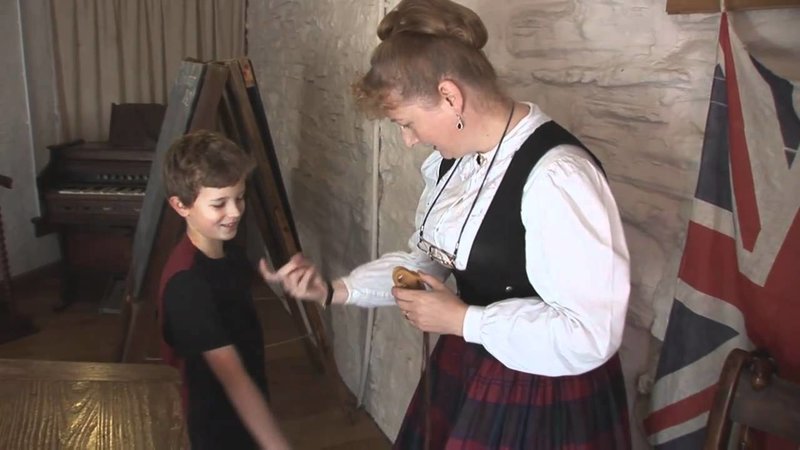
- Children who are spanked have lower IQs. Children who were re‐directed by using other forms of guidance or discipline were shown to have an IQ score of five points higher than children who were spanked. Why? Corporal punishment or the constant threat of violence is stressful! When individuals are under that amount of stress has a negative effect on brain development. During the act of spanking a child, zero learning can occur.
- What does spanking teach your child? Number one… spanking teaches children that violence is okay. It says that when others aren’t doing what you want them to do hitting them is the solution. When you spank you are teaching your child to be anxious and aggressive. Spanking displays to children that they are not worthy to live with the freedom from violence and aggression like adults are. It was only approximately 50 years ago that beating your wife was socially sanctioned and expected. Now, we as women can fully expect that freedom.
 It was “during the 1960s, the women's liberation movement began drawing attention to violence committed against women, and the battered women's movement began to form.” (Source: http://www.answers.com/topic/domestic‐violence)
It was “during the 1960s, the women's liberation movement began drawing attention to violence committed against women, and the battered women's movement began to form.” (Source: http://www.answers.com/topic/domestic‐violence) - "I was spanked and I turned out okay." You are probably right but stop and think:
- You would have turned out fine even if you weren’t spanked (and your childhood would have been a lot less painful).
- Not all kids who were spanked turned out bad – but why take a chance? Do your best as a parent to ensure your child will have the best future you can offer.
- Back then we didn’t know any better… now we do!
If this article is all about not spanking then we as parents need rational alternatives to spanking, as well as ways to deal with what can be frustrating moments during our parenting journey. So here are some tips, ideas and suggestions. Hopefully you can each find something that works and apply to other parenting strategies!
Ten Alternatives To Spanking By Destry Maycock
(article source: http://www. EzineArticles.com)
EzineArticles.com)
Spanking is only a temporary solution to ongoing problems. Spanking usually leaves a child wondering, "what should I do differently so I don’t get hit again?". Seldom are spankings followed by instruction on what the child needs to do or stop doing. It generally is nothing more than a release of the parent’s frustration directed toward the child. It teaches a child to comply because of fear rather than a sense of what is right or wrong. It teaches children that violence is an acceptable way to solve their problems. Children who are spanked often have a greater risk of low self‐esteem, aggression, lying, cheating, depression and bullying. Spanking sets the example that it is okay to hit when a person is upset or angry.
Below are ten alternatives to spanking that you might find helpful.
- Give choices. A choice gives some control back to the child on the parents’ terms. Parents who are really good at providing choices have children who are more compliant and good at making decisions!
- Take a timeout.
 Yes, you the parent walk away. It is perfectly okay to say. “I’m too upset to deal with you right now; we will talk about this later.”
Yes, you the parent walk away. It is perfectly okay to say. “I’m too upset to deal with you right now; we will talk about this later.” - Get someone else involved. If you feel like your child has got you so angry that you may not be in control, then ask someone else to help you who is not as intimately involved in the situation. This reduces the likelihood that you will strike your child.
- Teach them what you expect. Instead of punishing them for misbehaving, teach them what they can do differently. Tell them, “Next time, please hang your coat up in the closet! How can we help you remember to do this?”
- Recognize their positive behaviors. So, when they hang up that coat tell them how much you appreciate that! Too often parents only notice their children’s misbehaviors and disregard the things they do well.
- Timeout. The general rule is one minute for every year of their age. The setting where the timeout takes place isn’t as important as the fact you are tying the misbehavior to the consequence.
 Try to make it a place that is quiet and the child is unable to get your attention or be unintentionally rewarded. If a child is having a tantrum then their time should start when they have calmed down and can keep it under control for the duration of the timeout.
Try to make it a place that is quiet and the child is unable to get your attention or be unintentionally rewarded. If a child is having a tantrum then their time should start when they have calmed down and can keep it under control for the duration of the timeout. - Consequence. Providing a logical consequence is often very effective. Always tie the consequence back to the misbehavior. “I would like to be able to take you to the store but remember the last time how you ran around the store and wouldn’t listen to me. Well, I am not up for that. You are staying home with _____. Maybe next time you will be able to listen and you can go with me.”
- Pick your battles. Pick the top four things that you just can’t tolerate and focus on disciplining them just for those four behaviors. This lets your child know what is really important to you and you don’t come across as if you are disciplining them for every little infraction.
- Set limits. Instead of telling your children what to do try telling them what you are going to do or allow.
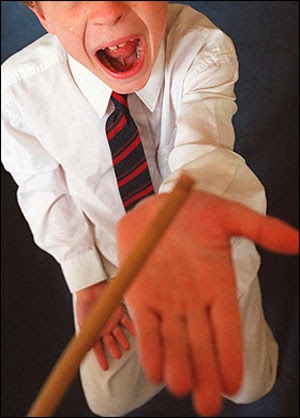 “I will be happy to take you to your friends when you have finished your chores.”
“I will be happy to take you to your friends when you have finished your chores.” - State your request in the positive. Have you ever noticed how we usually make a request or give directives in the negative? The first thing your child hears… what they can’t have. Just by changing the structure of how you make request will increase your child’s cooperation. Try stating things in the positive by telling them what they can have or what you will allow. They are less likely to argue when you are telling them what they can have or what you will allow.
12 Simple Alternatives to Lashing out at Your Child
- Take a deep breath… and another. Then remember you are the adult.
- Close your eyes and imagine you are hearing what your child is about to hear.
- Press your lips together and count to 10… or 20.
- Put your child in a time‐out chair (one minute for each year of their age).
- Put yourself in a time‐out chair.
 Think about why you are angry; is it your child, or is your child simply a convenient target for your anger?
Think about why you are angry; is it your child, or is your child simply a convenient target for your anger? - Phone a friend.
- If someone can watch the children, go outside and take a walk.
- Take a hot bath or splash cold water on your face.
- Hug a pillow.
- Turn on some music. Maybe even sing along.
- Pick up a pencil and write down as many helpful words as you can think of. Save the list.
- Call 1‐800‐4‐A‐CHILD
Additional and Informative Sites and Resources
- www.zerotothree.org
- www.stophitting.org – provides a lot of religious clarification about spanking.
- Greene, Ross. The Explosive Child
- Barkley, R. The Defiant Child
- Parents Raising Safe Kids, actagainstviolence.org
15 Dicipline Alternatives to Spanking
Reviewed by Renee A. Alli, MD on December 20, 2020
Spanking can bring more issues, like:
- Antisocial behavior
- Aggression
- Injury
- Mental health problems
Plus, critics say it just doesn’t work.
Use positive reinforcement when your kid does something good. Praise works. Kids will look for further approval.
Before your kid messes with the liquor cabinet, lock the door. If the kids are tussling over a toy, take the toy. Many times, changing the surroundings will change behavior. It’ll also squelch the need for more serious punishment.
Bring toys if you’re going somewhere your small child may act out. Take a snack if you think hunger may make them cranky. If sleepiness might bring trouble, think about a nap before you head out. It’s always better to nip the bad behavior before it happens than to try to deal with it in the moment.
You have to have rules. The more everyone understands them -- and what happens if they aren’t followed -- the better off the family will be. Flexibility is OK, especially with older kids. But reasonable rules -- and punishments -- are needed. Think about posting rules and their consequences somewhere in the house. It’ll help with consistency.
If house rules say that your kids must wash their hands before dinner, make sure it’s done every time. Rules don’t work if they’re selectively enforced. Kids need to know that they aren’t changing -- and the consequences of not following them aren’t either.
Everyone needs to know bad behavior comes with consequences. Whether it’s no TV, no cellphone, or more yard work, kids need to know that breaking the rules has a cost. You don’t need to hammer on it. Let the punishments show them. Be firm -- and consistent.
Yes, ignoring bad behavior is an option to spanking. It can work very well, especially with younger kids. With kids craving attention, sometimes no action is the best action. If a hissy fit does no harm -- if it’s just annoying -- some selective deafness can say, “Hey. That’s not gonna work.”
It’s a useful, effective tool. A good rule is a minute for each year of your child’s age. They should keep quiet in a corner or chair. Don’t interact with the kid while they're in the pokey. That’s a big part of the punishment. When it’s over, other than maybe an apology from the child, that’s it. Don’t bring it up again.
That’s a big part of the punishment. When it’s over, other than maybe an apology from the child, that’s it. Don’t bring it up again.
If you’re about to blow your top, don’t. Hand off to another adult. Call a friend. Count to 10. Take a bath. Take enough time to get calm so you know what to do next time. Humor can break the tension, too.
A good way to set a misbehaving kid straight is to turn their attention elsewhere and distract them. They want a toy someone else has? Look at this cool toy! If they’re grabbing or hitting, it might take a trip outside or to another room.
When the kids act out, it’s up to you to be the adult. That means control the urge to hit. Be calm. Be cool. Avoid the lifelong problems spanking can bring your child by staying under control.
A Stanford study showed that middle school teachers who took an “empathetic mind-set” toward wayward students gave half as many suspensions as those who didn’t. That can work at home, too. Talk to your misbehaving kid calmly, clearly, and with understanding.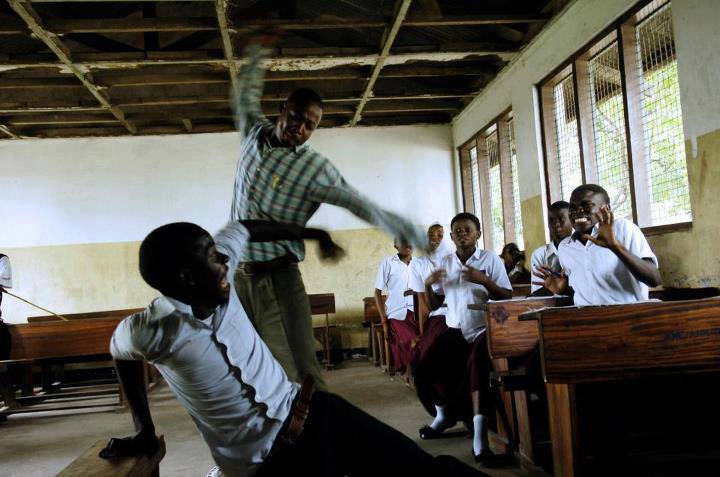
Kids misbehave. They’re kids. And good parents discipline them for it. But the give-and-take doesn’t have to be negative. Use it as a teaching moment to promote good behavior. After all is said and done, a little hug shows kids they’re still loved.
When you’re disciplining, be clear. Look your child in the eye. Be calm and measured. Tell the kid what to do (“Eat your spinach”) not what NOT to do (“Don’t play with your spinach”). If they still misbehave, explain the consequences. Follow through swiftly and consistently, too.
Especially with older children, being flexible enough to negotiate discipline and punishments can help everyone. Involving kids in making decisions adds to their moral judgment. It won’t work with an angry toddler, though.
IMAGES PROVIDED BY:
1) Getty
2) Thinkstock
3) Thinkstock
4) Getty
5) Thinkstock
6) Thinkstock
7) Getty
8) Getty
9) Getty
10) Thinkstock
11) Getty
12) Thinkstock
13) Getty
14) Getty
15) Thinkstock
SOURCES:
American Psychological Association: “The case against spanking.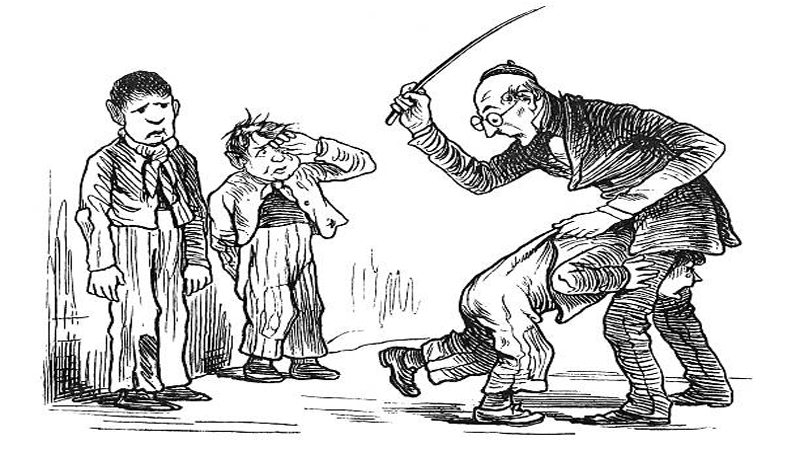 ”
”
Gershoff, E. Child Development Perspectives, July 2013.
American Academy of Pediatrics, Committee on Psychosocial Aspects of Child and Family Health. Pediatrics, April 1998.
Emory University School of Medicine: “Alternatives to Physical Punishment.”
ChildrensMD.org: “Beyond time-outs: No-yell, no-spank discipline.”
Virginia Cooperative Extension (Virginia Tech, Virginia State University): “Discipline for Young Children - To Prevent Misbehavior.”
Crary, E. Without Spanking or Spoiling: A Practical Approach to Toddler and Preschool Guidance, Parenting Press Inc., 1993.
National Association of School Psychologists: “Spanking: Alternative Discipline Strategies.”
North Carolina Division of Social Services, North Carolina Family and Children’s Resource Program (fosteringperspectives.org): “Parenting Without Spanking.”
Prevent Child Abuse America: “Spanking: When we know more, we can do better.”
University of Minnesota Extension: “Controlling Your Own Anger.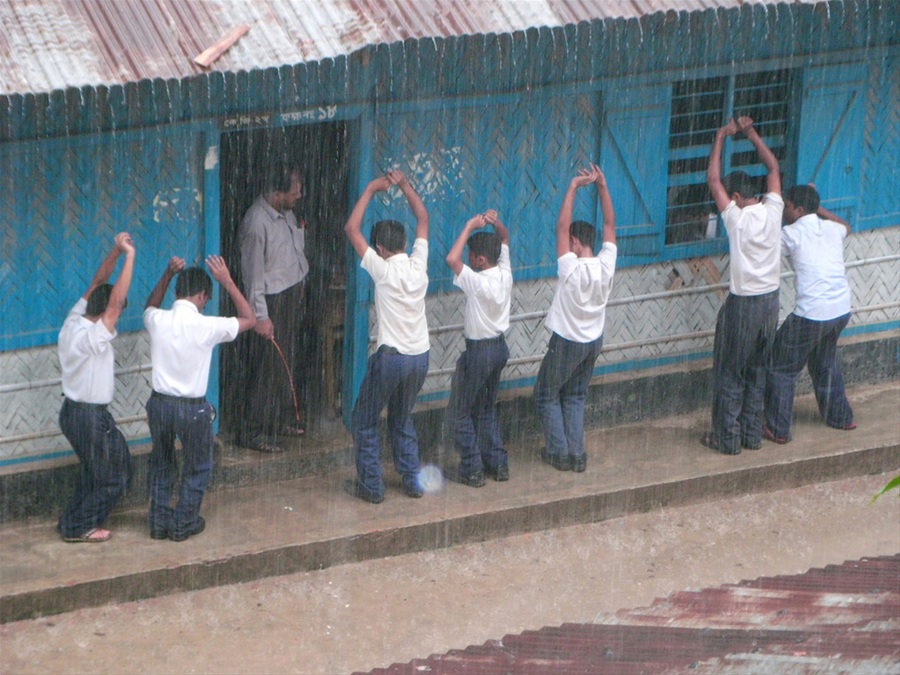 ”
”
University of Rochester Medical Center: “Anger Management: Strategies for Parents and Grandparents.”
Mental Health America of Wisconsin: “Effective Discipline Techniques for Parents: Alternatives to Spanking.”
Stanford University: “Teacher empathy reduces student suspensions, Stanford research shows.”
University of Rochester Medical Center: “How to Discipline Your Child With Love.”
Reid, JB. Development and Psychopathology, January 1993.
© 2020 WebMD, LLC. All rights reserved. View privacy policy and trust info
How to Effectively Discipline a Child - Child Development
Discipline is one of the most important, but also one of the most misunderstood words for parents. All parents agree that children need discipline, but there are many opinions on how to achieve this.
Let's take a closer look at how best to discipline a child. But first you need to figure out what it is.
Discipline and punishment
What do you associate the word "discipline" with? Punishment? Power? Positive reinforcement? All of these options are correct in their own way.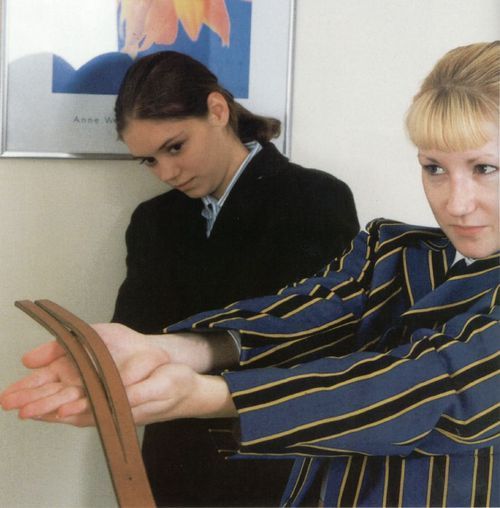 Disciplining is teaching a person how to follow a code of conduct, and punishment, positive reinforcement, or a show of power can be used for this. In other words, discipline is a way to get a child to behave properly.
Disciplining is teaching a person how to follow a code of conduct, and punishment, positive reinforcement, or a show of power can be used for this. In other words, discipline is a way to get a child to behave properly.
However, the methods parents use to do this can vary greatly. Most parents use punishment for this: they put the child in a corner, deprive him of any privileges, or even spank him. Some parents openly talk with the child, explain to him the expectations of his behavior and the consequences for breaking the rules. During conversations, parents use logical judgments and positive reinforcement. nine0003
Some of these methods are effective and allow the child to live happily and be successful, but others can turn him into a rebel who hates authority and order.
How to teach a child to discipline?
Teaching a child to discipline is not an easy task. To do this, you will need a lot of patience, love and skills in influencing a child.
1. Be clear about your expectations
How would you like your child to answer your questions? How would you like your child to behave in front of guests or in public places? What do you mean by discipline and good behavior? nine0003
If you don't have the answers to these questions, and you don't know exactly what a child should do in certain situations, how can he know this? Parents should have clear expectations and explain them to the child.
2. Be sane
As you set your expectations, remember that no one is perfect. Set specific realistic goals that are feasible for the child. If your child finds it too difficult to live up to your expectations, he may give up and take the path of least resistance. nine0003
3. Be Consistent
Some parents break the rules they set themselves from time to time because it's convenient for them. However, by doing so, you are showing your child that it is okay to break the rules. Consistently observing them, you thereby emphasize the importance of discipline. Follow the rules under any circumstances. But at the same time, you should not set too strict rules for the child or do something that can humiliate or embarrass him. nine0003
Consistently observing them, you thereby emphasize the importance of discipline. Follow the rules under any circumstances. But at the same time, you should not set too strict rules for the child or do something that can humiliate or embarrass him. nine0003
When you break the rules, it makes the child think: "If the parents break the rules, why should I follow them?"
4. Don't be too authoritarian
Parents are authoritative figures in the family for the child. However, it is up to you to decide which style to choose in communicating with your child - authoritarian or democratic. Let's see what is the difference between them.
Authoritarian parents explain their demands with the phrase: “Because I said so!” They expect the child to follow instructions without any explanation. Authoritarian parenting does not take into account the opinion of the child and can humiliate him. The older children get, the more they want to be respected. Therefore, adhering to an authoritarian style in raising children is not a good idea. nine0003
nine0003
Unlike authoritarian parents, democratic parents clearly clarify their expectations and set limits. They show the child by example and praise him for good behavior. To earn the respect of the child and convey your point of view to him, you should respect his opinion.
5. Keep in touch
When you talk to your child, don't get distracted. Stop everything, put away your mobile phone and look at the child. Only in this way will he understand that his words are important to you. nine0003
The child will be more obedient and follow the rules when he feels an emotional connection with you. He needs your compassion. Try to understand how he feels. When you start talking to him from these positions, he will begin to listen to your words.
6. Communicate openly
Do not make categorical statements that end your conversation with your child. For example, if he refuses to go to visit, you should not tell him: "I said that we are going - and that's it. " Instead, try to understand the child and ask: "Why don't you want to go visit?" When you understand the reasons for this behavior, it will be much easier to correct it. nine0003
" Instead, try to understand the child and ask: "Why don't you want to go visit?" When you understand the reasons for this behavior, it will be much easier to correct it. nine0003
7. Use your child's mistakes as an opportunity to teach him something new
Use your child's mistakes to help him become a better person. If you see that he is doing something wrong, do not rush to intervene or criticize him. Remain calm and give the child the opportunity to understand what he did wrong. When you point out mistakes to him, explain how to fix them.
When disciplining a child, it is important to be as clear as possible about expectations, to set a good example, to give the child choice and space to develop, and to set boundaries to keep him or her safe. nine0003
But how tight should the boundaries you set be? Is physical punishment of children acceptable?
Punishment and discipline are not the same thing
Do you think that discipline is impossible without punishment? If yes, you are not alone.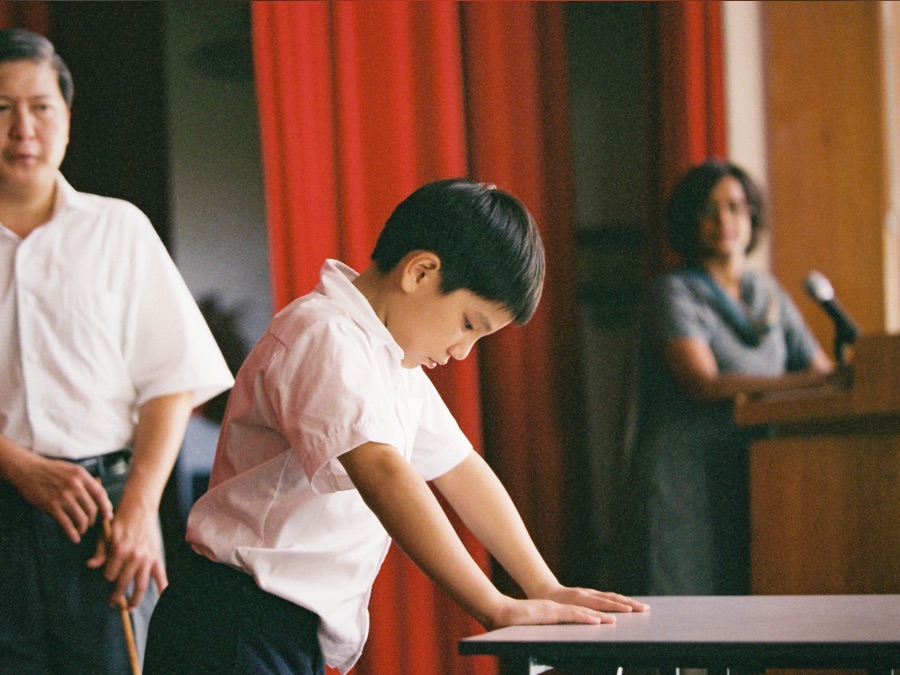 Many parents around the world feel the same way.
Many parents around the world feel the same way.
However, for a number of reasons this is not worth doing:
- in Latin, the word "discipline" means "learning". Disciplining a child aims to teach him good behavior, while punishments control the child's behavior through fear; nine0092
- although it is possible to control the child's behavior to a certain extent by means of punishment, this method of control makes him think that he is not responsible for his behavior;
- punishments that humiliate a child can cause long-term harm to his psyche;
- corporal punishment can lead to aggressive behavior. Children who are physically punished also run the risk of physical and emotional injury, antisocial behavior, etc.; nine0092
- Excessive corporal punishment can escalate into violence, damaging the child's psyche.
A child who is often punished begins to believe that someone else, and not himself, is responsible for his behavior. They act in such a way that someone will punish them for bad behavior.
Remember, there are no bad children, only bad behavior. Your goal is not to harm the child, but to correct his behavior.
Effective methods discipline child
Discipline aims to teach the child to distinguish between good and bad behavior, even from his subjective point of view. The main thing is to explain to the child the generally accepted rules of behavior and that he should never harm other people. At different ages, different methods of disciplining a child can be applied.
3 – 5 years
Children over three years of age understand directions and can follow them. They are also able to see the relationship between their actions and the consequences. At this age, children like to do things their own way, and so limits need to be explained to them. There are several efficient ways to do this.
1. Positive Discipline
Positive Discipline
As the name suggests, positive discipline focuses on the child's good deeds rather than the bad ones. The idea of this method is to emphasize what actions you expect from the child. This method works well with young children. nine0003
2. Guidance of the child
Young children still cannot distinguish between right and wrong actions. Toddlers need to be taught how to behave in society, communicate with new acquaintances and guests who come to the house, good manners and communication skills. Therefore, give your child simple and understandable instructions. Help your child distinguish between good and bad behavior.
The best way to do this is to set a good example. Do what you think is right, behave the way you would like your child to behave. Teach your child to say "thank you", "please" and "sorry" in appropriate situations. At an early age, a child may also learn phrases such as "I'm angry", "I'm hungry" or even "I love you", etc. nine0003
nine0003
3. Reward-based discipline
It is best to condition your child when they are too young to understand logic and explanations. Parents also often use punishment to force their child to behave in certain ways. But when you use punishment, you focus on the negative.
Reward-based discipline emphasizes the positive, that is, what the child should do. However, the reward should not turn into a bribe. If you reward a child for any little thing, he will not be motivated to behave well without a reward. nine0003
To avoid this, teach your child that rewards don't always have to be material. It can be, for example, ordinary praise. If a child is happy because he helped another person, this feeling for him is a reward.
4. Calming periods
If a child is stubborn, positive discipline in dealing with him may not work. Such children are capable of throwing tantrums to express their anger and frustration. Scolding your child or forcing them to do things according to your instructions can only make the situation worse. nine0003
nine0003
When a child refuses to obey you and becomes hysterical, give him time to calm down. Don't put him in a corner, let him spend some time in his room. A comfortable atmosphere will help him calm down faster.
Then talk to him about why he shouldn't behave in a certain way.
6 – 7 years
At this age, the child correlates the words of the parents with their actions. Therefore, before establishing the consequences of bad behavior for a child, make sure that they are justified. Don't threaten him with exaggerated or impractical punishments that you won't be able to carry out. nine0003
5. Set rules and boundaries
Children behave better when they know the rules. Therefore, set limits for the child. The rules you set should be simple and clear. The child needs to understand the consequences that await him in case of bad behavior.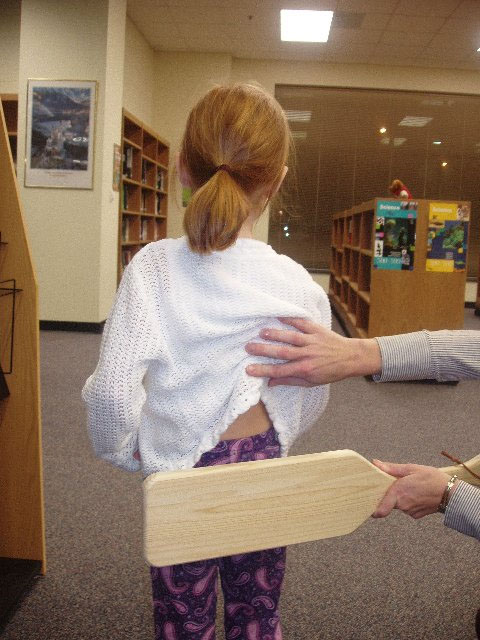 However, don't overdo it. Too many rules and restrictions can confuse a child. Set a few rules and require your child to follow them. nine0003
However, don't overdo it. Too many rules and restrictions can confuse a child. Set a few rules and require your child to follow them. nine0003
6. Teach your child about natural and logical consequences
An effective way to discipline your child is to use natural consequences that can be explained logically. Do not invent consequences that are convenient for you, as the child will quickly guess their far-fetchedness.
The natural consequences may be the child's feelings about something. For example, if he accidentally lost or broke a toy, do not rush to buy him a new one. Give him time to get over the sadness of losing his toy and understand the importance of taking care of things. nine0003
Logical consequences are not ones you choose, but those that are directly related to bad behavior. Understanding this will help correct the child's behavior.
For example, if he does not want to study, you can forbid him to watch TV or play computer games. If he constantly forgets toys on the street, he can be banned from playing with them for one or two days.
If he constantly forgets toys on the street, he can be banned from playing with them for one or two days.
7. Soft discipline (redirection)
Soft discipline is a special technique that consists in distracting the child from bad behavior and offering an alternative. For example, if a child wants to play with your cell phone, you can tell him, “Do you like to play with your cell phone? Okay, let's take a toy phone." This will redirect your child's attention. nine0003
If a child is playing in a dangerous place, you should take him to a safe place. No need to spank a child or use physical violence. Touch him gently and use phrases such as "This room is better for playing" or "It's too dangerous, come here."
8. Emotions Online coaching
Children throw tantrums, bite or fight when they cannot verbally express their emotions. The purpose of emotional coaching is to teach a child to identify emotions and express them in words, excluding pressure on him.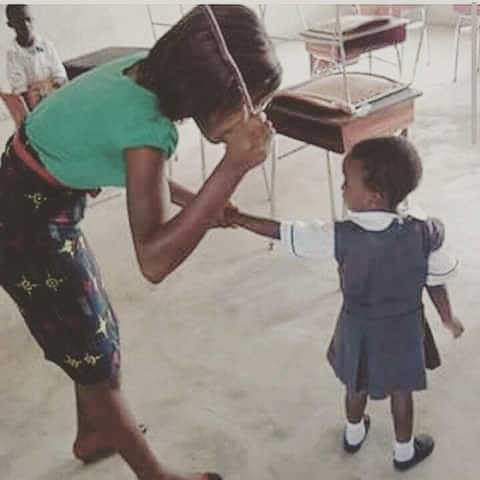 When your child starts fighting or throwing things around, tell him calmly, “I know you're angry that you have to spend so much time on your homework. Now you can take a break and draw a little, and then go back to doing the lessons.” nine0003
When your child starts fighting or throwing things around, tell him calmly, “I know you're angry that you have to spend so much time on your homework. Now you can take a break and draw a little, and then go back to doing the lessons.” nine0003
Emotional coaching involves 5 steps:
- track your own emotions;
- empathize with the child and keep in touch with him;
- listen to what the child is saying;
- name the child the emotions he is experiencing. To do this, you can make a list of feelings or print photos of people's faces expressing different emotions.
9 – 12 years
At this age, natural consequences are best suited to discipline a child. In addition, you can use the following techniques.
9. Cause and Effect: Help Your Child Learn From Mistakes
The consequences you set for a child for bad behavior should be appropriate for the child's age and situation. For example, if the child refuses to go to bed on time, let him go to bed later. The next day, when he feels sleepy and irritable, explain to him that this is because he did not go to bed on time yesterday. nine0003
For example, if the child refuses to go to bed on time, let him go to bed later. The next day, when he feels sleepy and irritable, explain to him that this is because he did not go to bed on time yesterday. nine0003
Use natural consequences to help your child learn from mistakes.
10. Offer Alternatives
When you tell your child "no" and don't offer anything in return, he can become stubborn. Logical explanations will not work if the child is trying to express his independence through actions. Come up with alternatives that allow you to collaborate.
When you give a child a choice, he will not have the opportunity to say no. If he has two simple options, any of his choices will be correct. For example, if your child is throwing a tantrum because you don't want to buy them fizzy drinks, next time ask, "Do you want apple juice or orange juice?" So you let him know that he only has these two options. If the child still refuses both options, do not lose your cool. Keep giving him these options until he chooses one of them. nine0003
Keep giving him these options until he chooses one of them. nine0003
13 years and older
Adolescents are usually not easily persuaded. Logical arguments may not always act on them. If these arguments don't work, try the following methods.
11. Discussion and finding a common solution
Adolescents do not like being told what to do and how to behave. They like to be treated like adults when they really aren't. So when your teen has behavior problems, don't give them ultimatums. Discuss the problem with him and come up with a joint solution. As a result, the teenager will feel more responsible and will probably agree to your proposal. nine0003
12. Deprivation of privileges
When a teenager breaks the rules, as a punishment, he can be deprived of any privileges. For example, if he doesn't come home on time, ban him from going out for the next few days.
The privilege you deprive a teenager of must be related to his misdeed so that he can understand the consequences of his behavior.
13. Negotiation
Another way to discipline a teenager is negotiation. As mentioned earlier, teenagers like to exercise their independence by making their own decisions. When there is a conflict of interest between you, make an agreement. So the teenager is more likely to make concessions to you. nine0003
You can't discipline your child if you don't follow the rules yourself. Whether your child is three or sixteen, they will look to you for advice and support. Be a good example for your child so that he does not justify his bad behavior by saying that you do the same.
Punishment of a child | How to punish a child
Hello, our readers! Punishment of a child, children, what is your attitude to this? Should I be punished or not and how to do it right? Should punishments be physical or are there other methods, ways and types of influence on children? Is it possible to educate using only encouragement without punishment, so as not to injure the child's psyche? You can learn about all this by reading the article carefully to the end.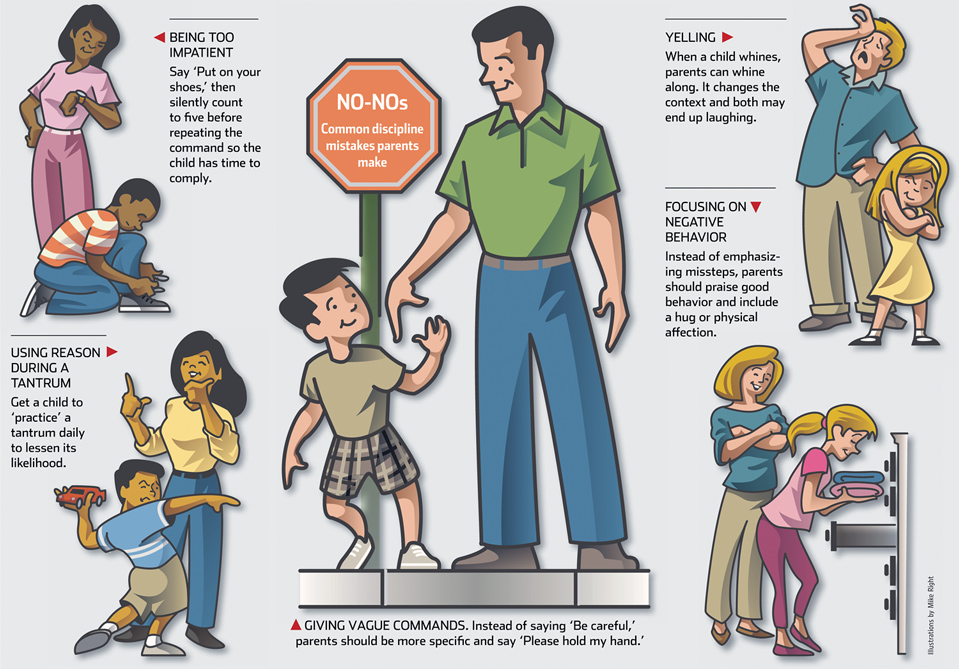 nine0003
nine0003
We have tried to collect all the information on common questions regarding punishment.
Contents of the article
Education without punishment: pros and cons
People's opinions are divided about punishment: there are both its supporters and opponents. But you must admit that time puts everything in its place and what does it show? If you do not punish a child for a misconduct, this is a recipe for raising an egoist (most cases). The child gets used to it, you can do what you want, behave as you want. Gradually, it becomes the norm of his life. nine0003
At first, the child asks, then, growing up, he begins to demand, and, having matured, he takes by force what he needs. Agree, when a person demands, without taking into account the feelings or capabilities of others, this is a formal egoist.
When a person thinks only about himself, considering himself the center of the universe, not interested in the opinions of others, he becomes an egoist. If you do not punish, then children grow up as weak-willed people or with a sense of permissiveness.
If you do not punish, then children grow up as weak-willed people or with a sense of permissiveness.
If you bring up children without punishment, then the children themselves will suffer. Since they grow up as completely uncontrolled people, accustomed to doing whatever they want. They lack a proper understanding of good and bad. nine0003
It is worth noting that traditionally Russian upbringing has always implied a certain strictness. Where strictness means some kind of restrictions, rules, even spanking in extreme cases, but without violence.
We recommend reading about how parents can properly raise a child.
When a child is punished, and there are different ways of punishing a child, then the children benefit. It is like pruning trees. In order for the tree to grow better, unwanted branches are cut off, thus stimulating the growth of the remaining branches. It is the same with children, if you cut off wrong inclinations, punishing children for bad deeds, then parents help them grow in the right direction. nine0003
nine0003
Punishment leads to a good result. Children learn to be responsible for their actions, to think about the feelings of others. They also grow up to be strong, responsible, more successful people.
Conclusion : It is necessary to punish, only it must be done correctly and reasonably.
In this video, the teacher and writer T. Shishova explains that without reasonable punishment it is impossible to raise a human being out of a child.
How to punish a child
1. Punish the offense, not the child
It is not the children who should be punished, but the bad deed they have committed. At the same time, it is imperative to explain what was done wrong, why it is impossible to do this, and why they will now be punished. There must be some kind of logical consistency in the punishment. This must be done in order to avoid children's insults that arise due to a lack of understanding by the baby, which is why he was given a scolding.
For example, after punishing our daughter, we would give her some time to calm down (cry), then go into her room and talk to her. We always told our daughter that we love her, she is a good girl, but her deed was very bad, for which she was punished. They said that it was very unpleasant for us to even hurt her, so we asked her not to hurt us or her anymore. nine0003
2. Punishment of children should correspond to misconduct
So, it is not necessary to spank the “soft spot” for any childish prank or misconduct. This is the most extreme measure when other methods of influence are ineffective. You can punish with a slap when the child specifically makes Skoda. He knows he can't, but he does it anyway.
For example, he tries to climb into the socket, play with matches. Or when kids indulge so much that it can threaten their health. Then the punishment of a belt on the buttocks of children helps to form an association in them that it is dangerous and painful. nine0003
3.
 Take away privileges or rewards
Take away privileges or rewards This method of punishing a child should be done in private. For example, avoid giving other children candy in front of your child, but he does not. This can cause unwanted resentment, aggression, discontent in the child.
Always warn your child in advance that for disobedience you will deprive him of some privileges, gifts or prohibit watching cartoons, fairy tales. But remember that this does not apply to outdoor walks, normal healthy food and good children's communication. nine0003
4. Punish by ignoring
For example, when parents ignore their child, not paying attention to him, especially when he is hysterical or capricious. Since the child is afraid of losing the sense of security that exists due to the contact between him and his parents, he can calm down. Thus, you can influence a naughty baby.
Read on this topic: How to deal successfully with children's tantrums?
5. Encourage responsibility by punishing
Punishment should teach the child to always be responsible for his misdeeds. It should also help children develop self-discipline. If the kid made a mess in the room, then he eliminates it himself. He broke a vase about which he was warned, therefore, he does not receive pocket money. He cleans his shoes himself, if he specifically walked through the mud.
It should also help children develop self-discipline. If the kid made a mess in the room, then he eliminates it himself. He broke a vase about which he was warned, therefore, he does not receive pocket money. He cleans his shoes himself, if he specifically walked through the mud.
Conclusion: punishment should encourage children to eliminate the consequences of their behavior themselves.
6. Limit in space
A child can be put in a corner for disobedience or forbidden to leave the room. The main thing is to explain to him why and for what you limit him. Also avoid closing the baby in closed, enclosed spaces: bath, toilet, pantry. If this type of punishment does not affect him, then it is worth choosing another method.
7. Do not appease after educational measures
After punishing, do not run to the store to buy another toy or sweets in order to appease your child. Over time, for him, this will result in a means to always achieve what he wants. The son of our acquaintances once said so: “I will always achieve my goal. I'll get my parents to spank me, throw a tantrum, and then they'll buy whatever I want." nine0003
The son of our acquaintances once said so: “I will always achieve my goal. I'll get my parents to spank me, throw a tantrum, and then they'll buy whatever I want." nine0003
Mistakes to avoid when punishing
1. Do not set boundaries for what is permitted
Forget to set clear boundaries for what is permitted, beyond which a child can be punished. For example, think there is a difference how to say "you can play in THIS room" or just "you can play outside"? And specifically, where on the street? The street is big.
"Collect the toys in the room, or collect the toys on the shelf, in the box." For a child, toys in a pile in the middle of the room are considered collected. Feel the difference? Do you get the gist? To scold without setting clear, concrete boundaries is wrong. nine0003
Find out tips on how to properly and skillfully discipline your children!
2. Because of the misdeed of one, others should not suffer
Because of catching up with one child, other children or family members should not suffer. For example, the family gathered to watch TV. One kinder misbehaved, so his father punished him by turning off the TV. Or the family was going to go for a walk in the park, but the kid behaved badly, so everyone stayed at home. Thus, EVERYONE feels punished.
For example, the family gathered to watch TV. One kinder misbehaved, so his father punished him by turning off the TV. Or the family was going to go for a walk in the park, but the kid behaved badly, so everyone stayed at home. Thus, EVERYONE feels punished.
The family is not an army where the principle of collective responsibility is well developed and operates. One is guilty, and everyone suffers. Such punishment does not educate, but gives the child control over the whole family. Who is punished? Him or all family members?
3. Punishing children under the "hot" hand
This always exceeds the punishment. It happens that you gave a rush in the heat of the moment, then you suffer from the understanding that you went too far.
4. When punishing, insulting or humiliating children
It is strictly forbidden when punishing a child to call a child stupid, bad, bad, or invent some nickname for him. Some parents go even further, telling the child that it would be better if he was not born at all if he is so harmful. This gives rise to one of two reactions in the child: hatred or a sense of worthlessness, inferiority. nine0003
This gives rise to one of two reactions in the child: hatred or a sense of worthlessness, inferiority. nine0003
Instructions for punishing a child
- Punishment must be proportionate to the offense.
- If possible, should immediately follow the offense, that is, he was guilty and immediately received.
- Establish clear boundaries for what is permitted for the violation of which he will be punished.
- Always learn to explain in detail and intelligibly to children the limits of acceptable behavior.
- We apply punishment only for those offenses that children do on purpose, consciously. If the baby broke or overturned something by accident, it is necessary to calmly and clearly explain to him that you need to be more careful, more careful. Also help him remove the consequences of his negligence. nine0092
- Teach your children about good behaviour. Talk about them simply and repeat them constantly. When explaining the rules, take the child by the hands and look into his eyes.
 Speak slowly and then ask him to repeat these rules. This will help you understand whether the baby understood everything correctly.
Speak slowly and then ask him to repeat these rules. This will help you understand whether the baby understood everything correctly. - Do not drive evil on children. Watch what you say to the baby, punishing him. Verbal insults and humiliation are categorically unacceptable, especially when emotions overwhelm you in the heat of anger.
- Having punished for some misconduct, we no longer remember and do not return to it to punish again.
- Tell your child in advance how he will be punished for disobedience. So that your child knows exactly what to expect.
- Remember what you didn't like when you were punished as a child, what is hard to remember? Then do not allow this with your child.
- Always keep your word. If you said that you will punish for a misconduct, then punish. If you forget to do this, then the child gets used to the fact that your warning is empty words. Therefore, they will not be taken seriously. nine0092
- Mandatory conciliation.
 Before you put your child to bed at night, be sure to assure him of love, even if he was punished during the day.
Before you put your child to bed at night, be sure to assure him of love, even if he was punished during the day.
Reward and punishment
The question is rather difficult, since many parents find it difficult to choose how to teach their children to obedience - reward or punishment. Parents often make one common mistake. They separate reward from punishment, although the two go hand in hand. Or they remember the punishment, forgetting about the reward. nine0003
For example, the child cleaned up the toys, washed the dishes, or did not behave aggressively. Parents calmly continue to go about their business without encouraging the child in any way. But, if the child raises a fuss, is naughty, indulges, the parents immediately turn their strict parental gaze on him, punishing him.
Find out 10 tips on how to deal with child aggression!
Incentives should also be age-appropriate for children. For example, a preschool child should be encouraged with what he likes the most.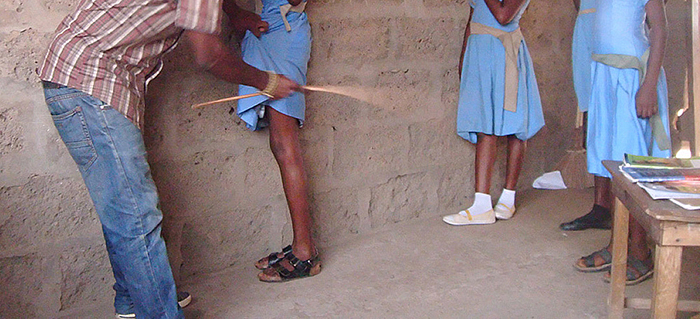 It can be joint games with him that he likes. nine0003
It can be joint games with him that he likes. nine0003
Adolescent's rewards focus on hobbies, such as socializing with friends, sports, or even playing a computer game. When the behavior matches what is expected, parents can let it all take time.
If parents tend to financial incentives, then it is important for them to find a middle ground. Since the child may develop the habit of doing the right thing only for material reward. If there is no reward, or if it is less than expected, then he will misbehave. nine0003
This method of encouragement becomes not education, but the development of self-interest in the child. In wishing to encourage children financially, parents need to be guided by common sense. For example, asking yourself “why does a child need what I want to reward him financially?”
Punishment does not begin with harsh measures, but with persuasion. When a parent tries to find arguments to convince his child to act according to certain rules. Also with the desire to instill in the child that he needs to act according to these standards.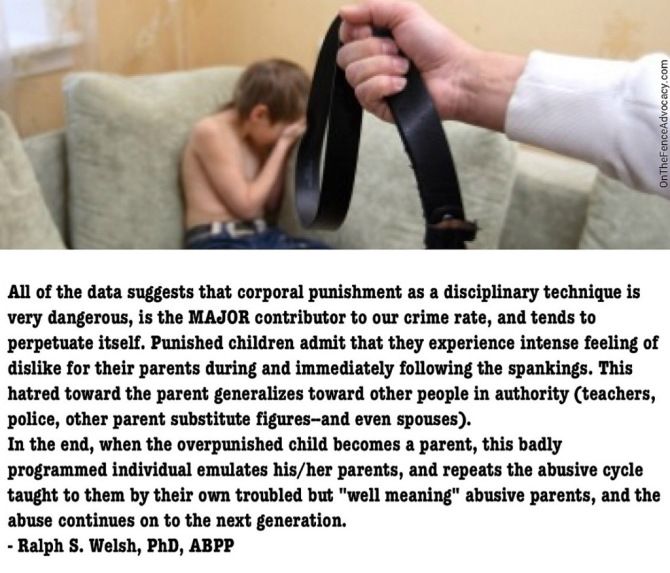 nine0003
nine0003
Only when this fails does the parent resort to punishment, which may be closely related to reward. For example, a reward that a child values \u200b\u200bmay be a punishment for him.
What is important for parents to remember when using encouragement and punishment of children
Positive qualities, good behavior is brought up, first of all, not by punishment, but by encouragement. Therefore, encourage in the child the development of those qualities that you want to see. Don't ignore the good behavior of children. Praise the actions that show the baby that he is doing the right thing. Then you will have to resort to various vstrёpki less. nine0003
Punishments must not exceed rewards. For example, if the reward was an hour of playing on the computer, then the punishment should not be the deprivation of these games for a whole week. This can provoke resentment due to unfair treatment of oneself.
Punishment should show the child the reasoned behavior of adults.







